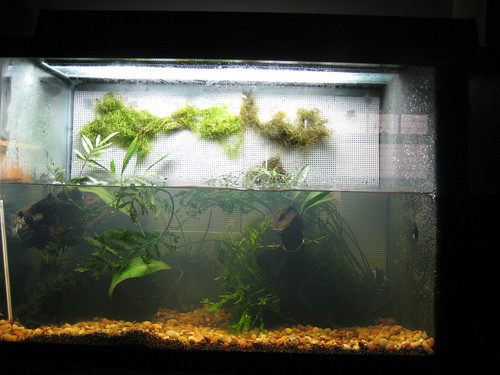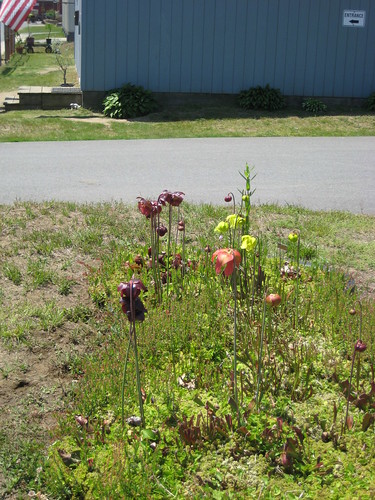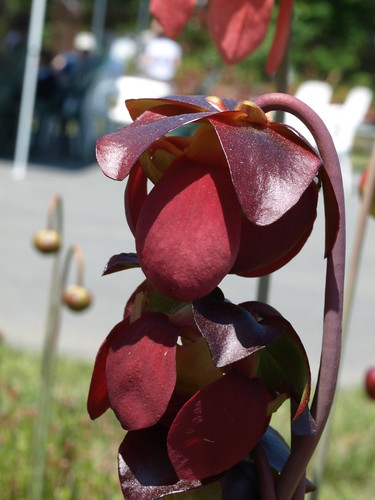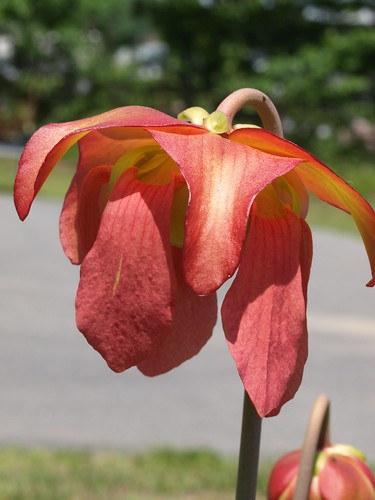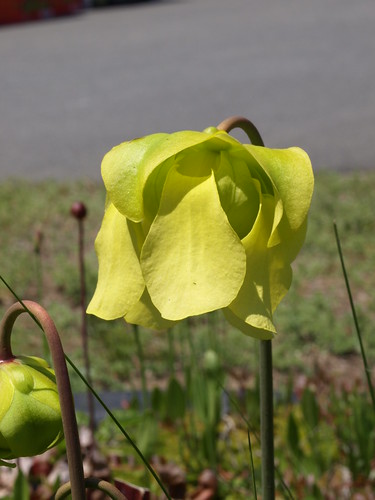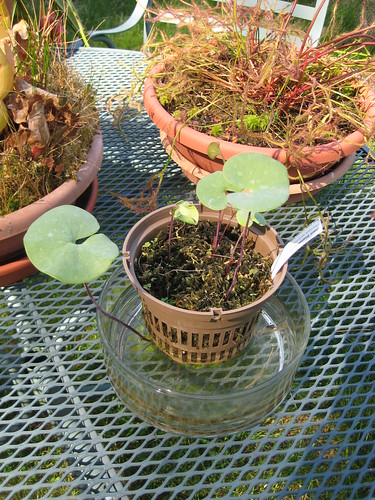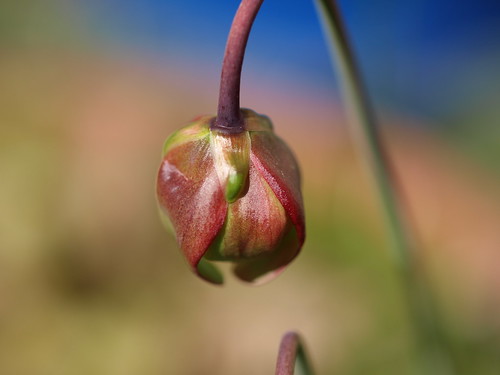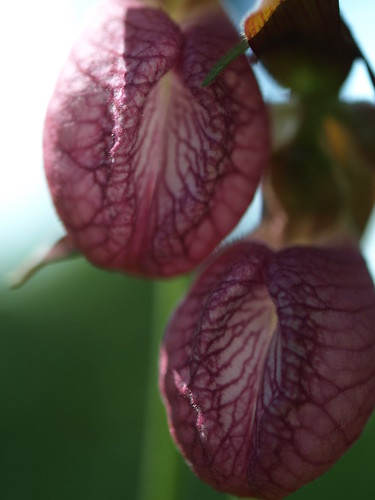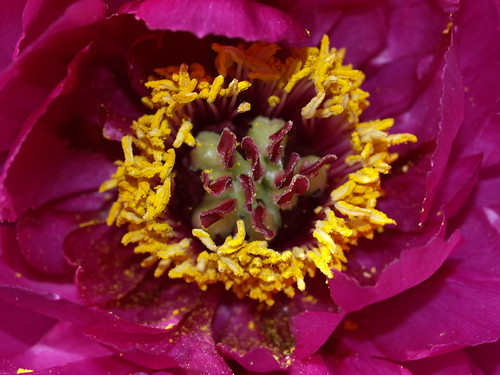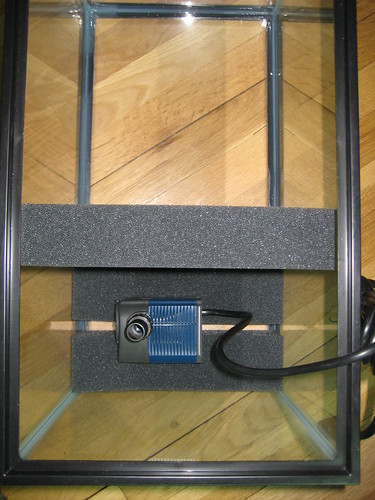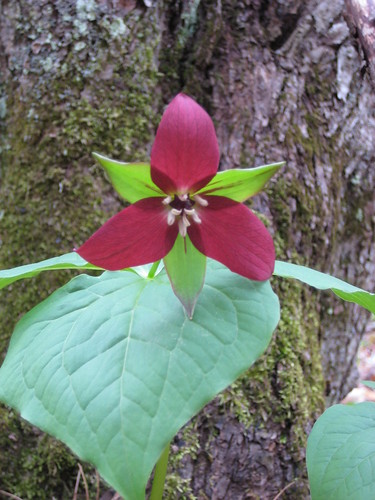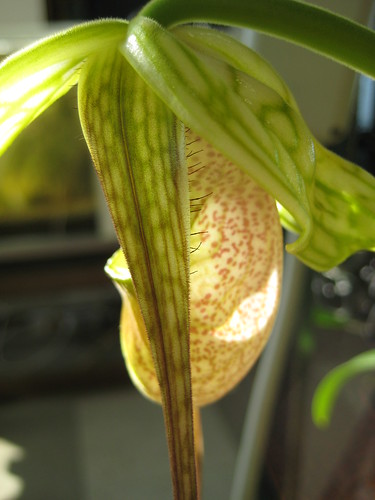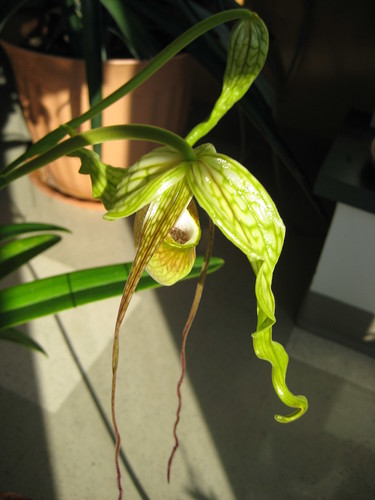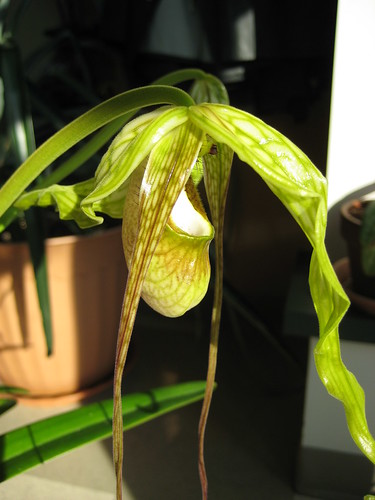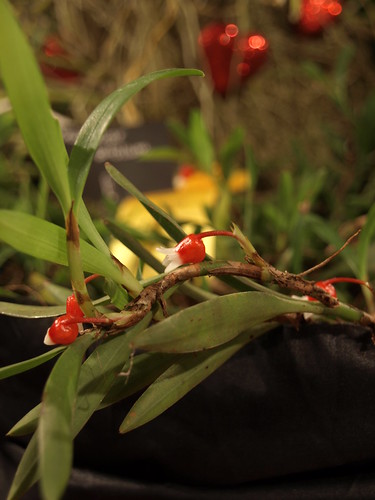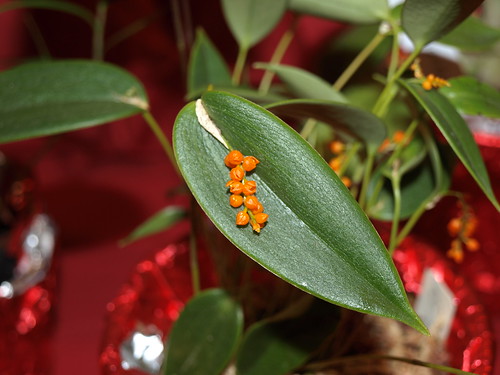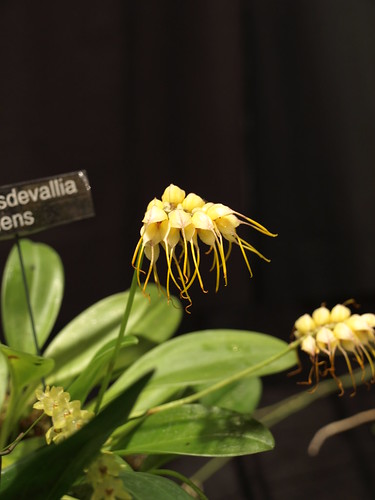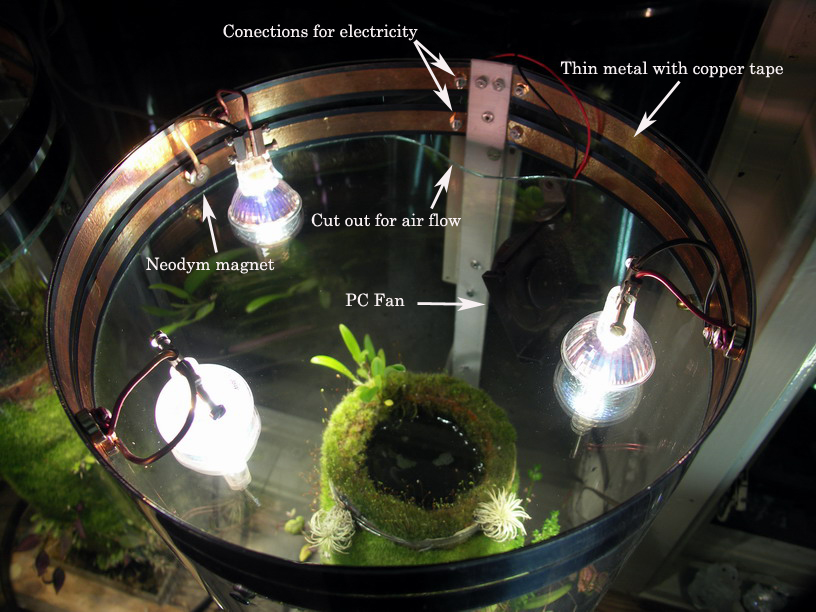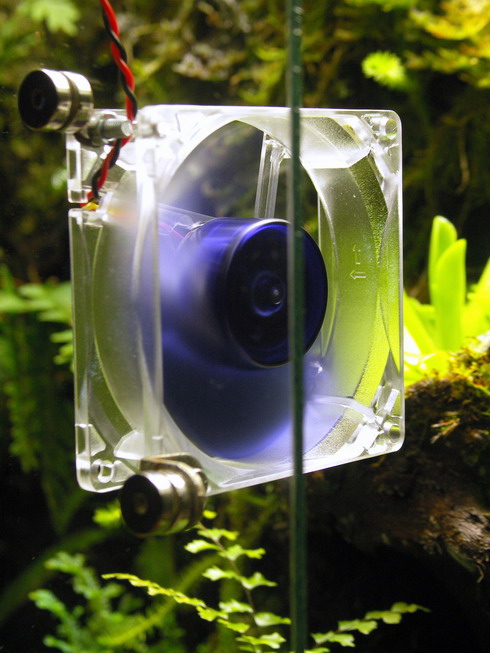I just caught the male pepperi (they’ve been renamed) dropping the kids off at the pool.
*
In other critter news, hydrophyte inspired me to re-do the 29 gallon aquarium in the Design Student’s room. After losing all the inhabitants during the ice storm, I repopulated it with an African butterflyfish (Pantodon buchholzi) and a pair of upside-down cats (Synodontis nigriventis). I’d seen a beautiful West African setup in Yoshino and Kobayashi’s The Natural Aquarium – combine that with a chapter on ‘The Aerial Advantage’ in Walstad’s Ecology of the Planted Aquarium
and all I needed was a glimpse of hydrophyte’s ripariums to precipitate a new approach to the tank. I covered the back wall with plastic needlepoint grid and tied Java moss, Anubias and Bolbitis to it; I’m hoping the moss will expand to cover everything. I took the water level down to 10 inches – approx. the golden ratio point – and I planted most everything so that it has the opportunity to grow emersed. We’ll see what happens.
*
I changed the filter set-up – without the filter change, the lower water level would have been a problem. I had been using an external hang-on-back style filter – I switched to a piece of foam the same size as the side of the aquarium with a small powerhead behind it. You can see the foam on the right side of the picture above.
I also snuck in a juvenile pair of Pelvicachromis sacrimontis – love those dwarf cichlids.
Yesterday was the three year birthday of the blog – I was too busy being a crazy natural historian to post, but thanks to all who have stopped by over the past 3 – it’s been fun (for me, at least).


